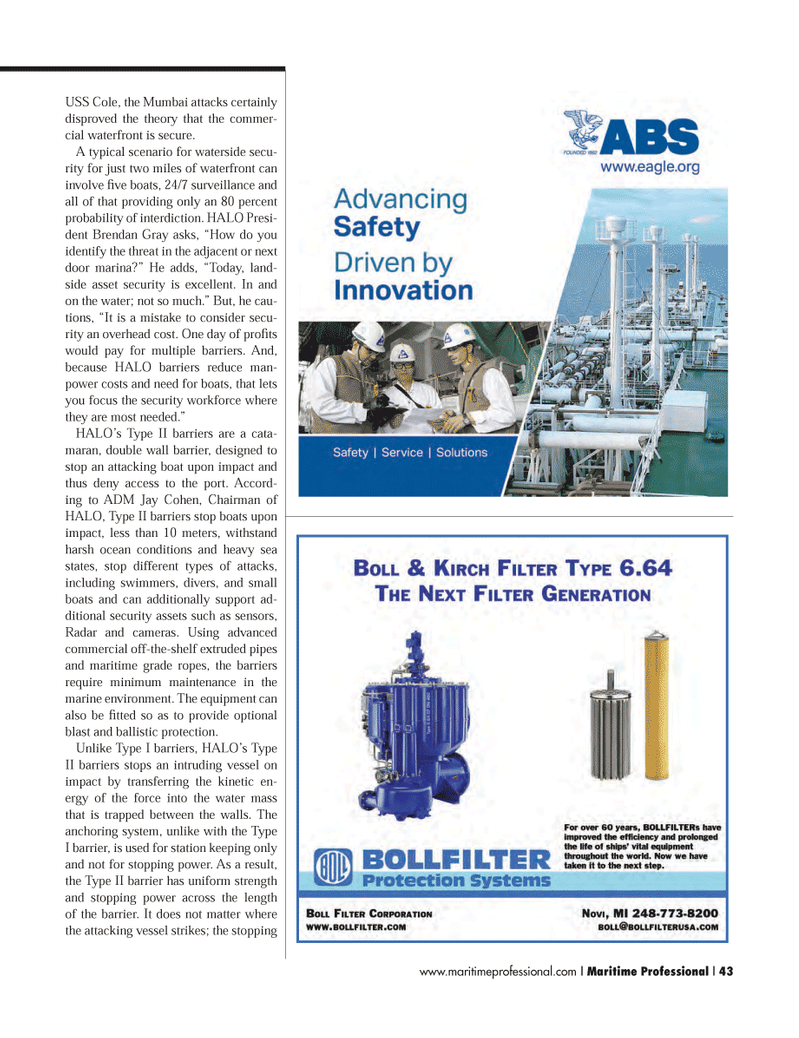
Page 43: of Maritime Logistics Professional Magazine (Q3 2014)
Power & Fuel Management
Read this page in Pdf, Flash or Html5 edition of Q3 2014 Maritime Logistics Professional Magazine
USS Cole, the Mumbai attacks certainly disproved the theory that the commer- cial waterfront is secure. A typical scenario for waterside secu- rity for just two miles of waterfront can involve Þ ve boats, 24/7 surveillance and all of that providing only an 80 percent probability of interdiction. HALO Presi-dent Brendan Gray asks, ÒHow do you identify the threat in the adjacent or next door marina?Ó He adds, ÒToday, land- side asset security is excellent. In and on the water; not so much.Ó But, he cau- tions, ÒIt is a mistake to consider secu- rity an overhead cost. One day of proÞ ts would pay for multiple barriers. And, because HALO barriers reduce man-power costs and need for boats, that lets you focus the security workforce where they are most needed.Ó HALOÕs Type II barriers are a cata- maran, double wall barrier, designed to stop an attacking boat upon impact and thus deny access to the port. Accord- ing to ADM Jay Cohen, Chairman of HALO, Type II barriers stop boats upon impact, less than 10 meters, withstand harsh ocean conditions and heavy sea states, stop different types of attacks, including swimmers, divers, and small boats and can additionally support ad-ditional security assets such as sensors, Radar and cameras. Using advanced commercial off-the-shelf extruded pipes and maritime grade ropes, the barriers require minimum maintenance in the marine environment. The equipment can also be Þ tted so as to provide optional blast and ballistic protection. Unlike Type I barriers, HALOÕs Type II barriers stops an intruding vessel on impact by transferring the kinetic en-ergy of the force into the water mass that is trapped between the walls. The anchoring system, unlike with the Type I barrier, is used for station keeping only and not for stopping power. As a result, the Type II barrier has uniform strength and stopping power across the length of the barrier. It does not matter where the attacking vessel strikes; the stopping www.maritimeprofessional.com | Maritime Professional | 4334-49 Q3 MP2014.indd 4334-49 Q3 MP2014.indd 438/13/2014 3:09:07 PM8/13/2014 3:09:07 PM

 42
42

 44
44
